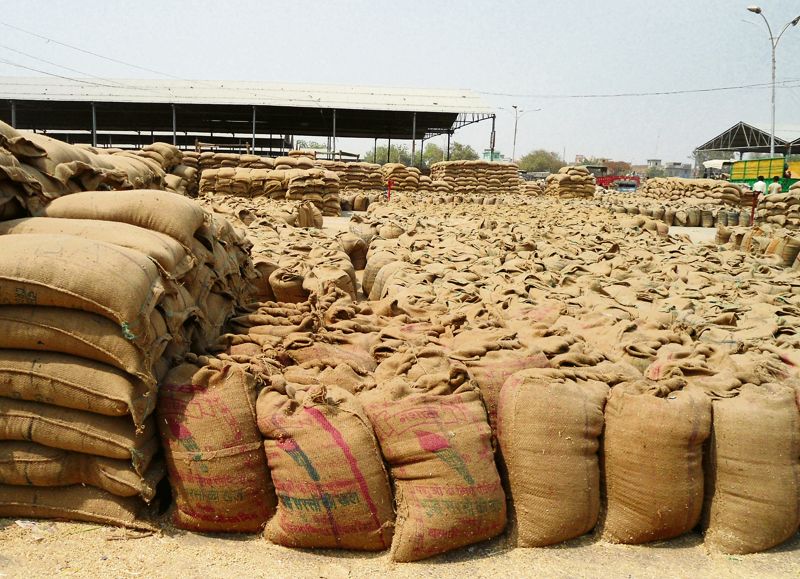Vibha Sharma
New Delhi, October 14
After wheat, the rice stock in the Central pool recorded a dip this October as the last year, amid weather vagaries.
According to the FCI data, wheat and rice stocks stand around 432.13 lakh tonnes (wheat: 227.46 LMT; rice: 204.67 LMT) against 721.78 LMT (wheat: 468.52 LMT; rice 253.26 LMT) last year. The stock of the unmilled paddy in the corresponding period last year was 118.25 LMT.
While wheat at 227.5 LMT is at a six-year low (though still over minimum buffer of 205.2 LMT), the rice stock, including the unmilled paddy, is higher than the required levels, making the overall cereal stocks position “comfortable”. Officials say there is sufficient foodgrain in stock and that there will be no deficiency in fulfilling commitments under various government schemes.
However, the government has to make do with the existing wheat stock for the next six months till the new crop arrives. At the current consumption rate, around 20 to 21 LMT wheat is required every month. As per the norms, 44.60 LMT as operational stock and 30 LMT as strategic reserves should be available on April 1, when the next crop starts arriving.
The heat wave in Punjab and Haryana affected the wheat crop, resulting in shrivelled grain. The next crop is expected to arrive in the mandis beginning April 1, 2023. Till then, the country has to rely on its existing stock, which is the reason the government increased the quota of rice in free ration, which was objected to by states where wheat is consumed.
Kharif production (largely rice) is also expected to fall this season due to irregular rains and crop diversification. Farmers say incessant rains flattened standing paddy crop, delayed harvest and damaged the quality of grain and yield.
Meanwhile, the Centre recently extended by three months the Pradhan Mantri Garib Kalyan Anna Yojana (PMGKAY) — the programme to provide free rations to India’s 80 crore poor.
Under the scheme, 122 LMT grain will be provided to more than the poor at a cost of over Rs 44,762 crore. The scheme was started in April 2020 to help people whose livelihoods were affected by a nationwide lockdown but most states wanted it to continue.
According to the first advance estimates for the 2022-23 crop year (July-June), the foodgrain production is estimated at 149.92 million tonnes as against 156.04 million tonnes in the previous season.
Notably, the Expenditure Department under the Finance Ministry is also believed to have advised against extending the scheme on food security and fiscal grounds. The government has also placed restrictions on the export of wheat and broken rice.
However, as the sudden ban on exports of the broken rice prevented the loading of cargo, India yesterday permitted the shipment of 3.97 LMT backed by letters of credit issued before September 8, according to a government notification on Wednesday.
432 LT in stock
As per FCI data, wheat and rice stocks stand around 432.13 lakh tonnes (wheat: 227.46 LMT; rice: 204.67 LMT) against 721.78 LMT (wheat: 468.52 LMT; rice 253.26 LMT) last year


